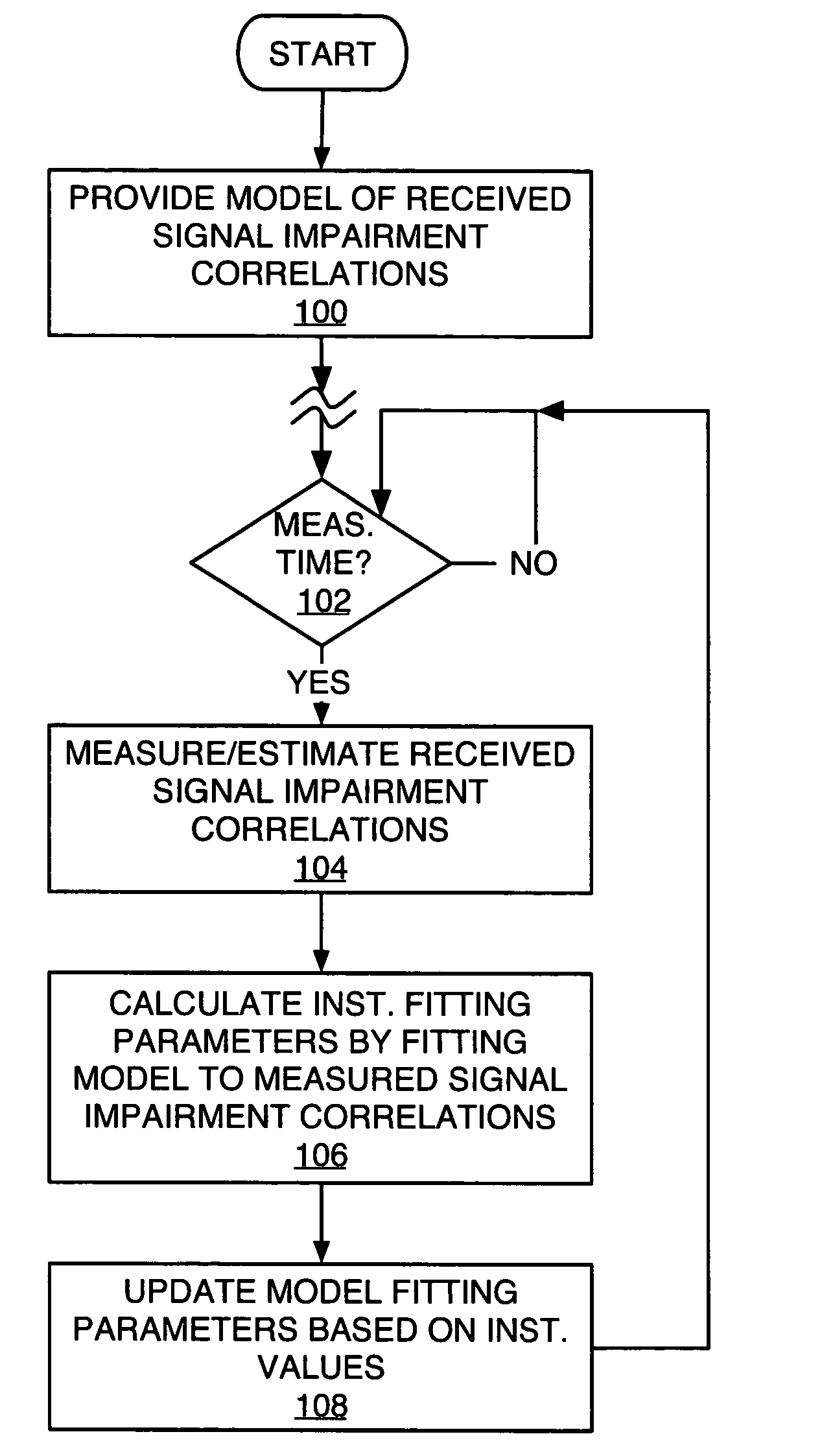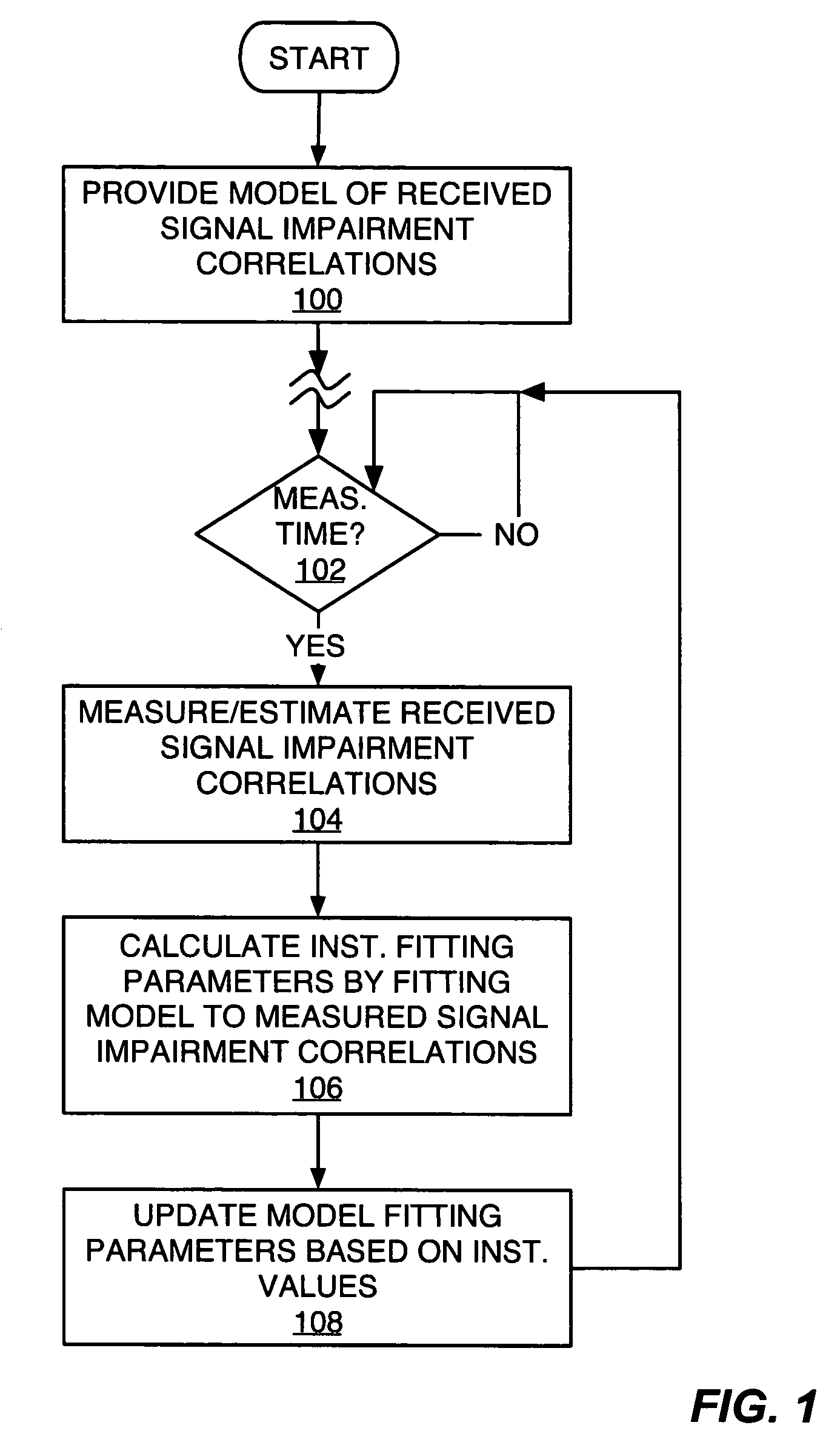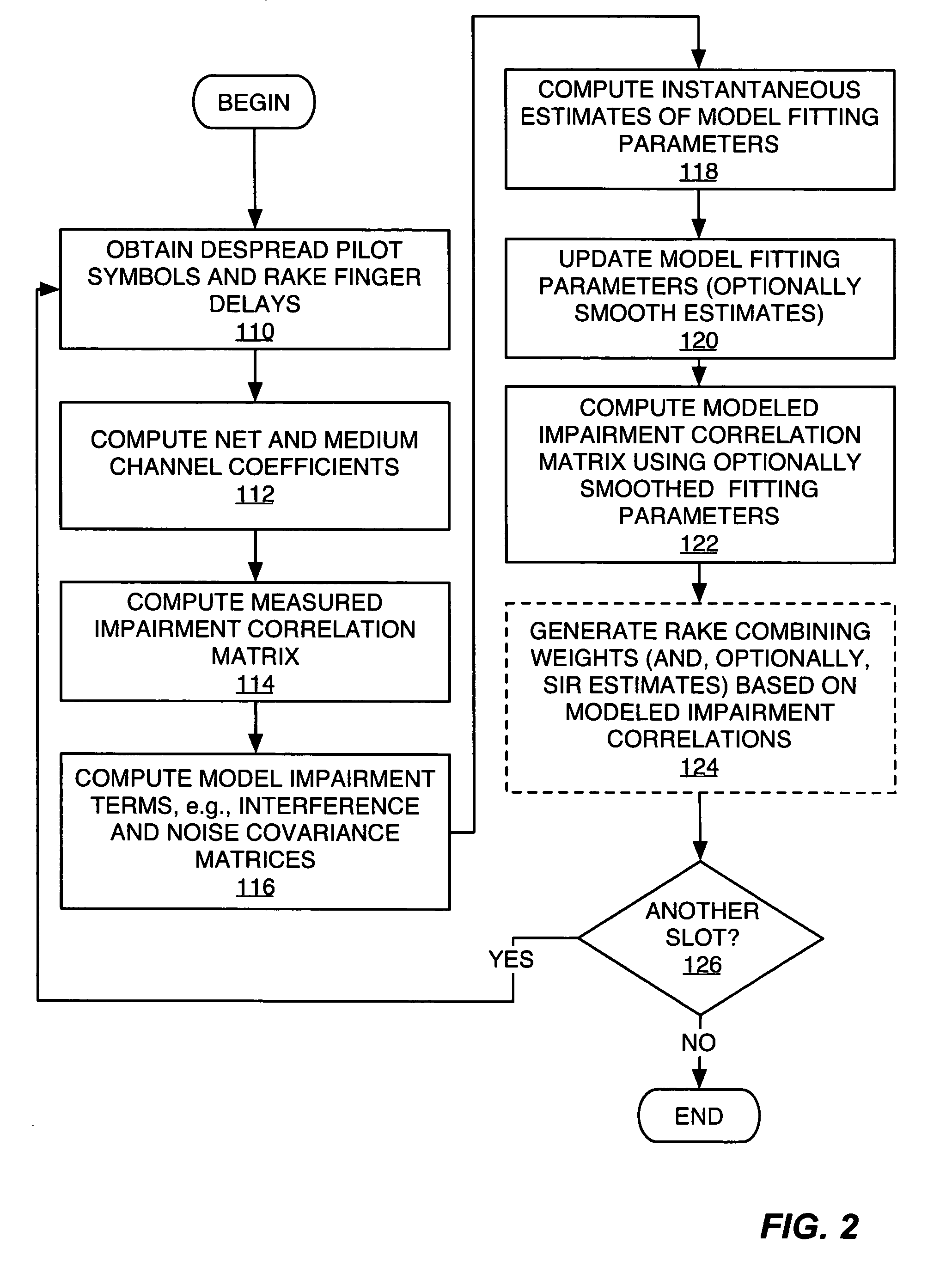Method and apparatus for parameter estimation in a generalized rake receiver
a generalized rake receiver and parameter estimation technology, applied in the field of wireless communication services, can solve the problems of impairment correlations with sufficient accuracy and rapidity, and the performance of a conventional rake receiver is degraded
- Summary
- Abstract
- Description
- Claims
- Application Information
AI Technical Summary
Benefits of technology
Problems solved by technology
Method used
Image
Examples
second embodiment
[0054]While specific approaches for channel estimation and parameter fitting are given, the invention is not limited to these particular approaches. Below is described a second embodiment which employs different approaches for channel estimation and parameter fitting. This embodiment offers an exemplary method of computing channel estimates based on an interpolative approach. The summation limits in the below equations assume a WCDMA slot wherein one transmit antenna sends ten pilot symbols per traffic slot.
[0055]With the second embodiment, the medium coefficients are set equal to the net coefficients (ĝ={tilde over (h)}). The net coefficients are computed for all fingers as an interpolative function of time within the slot. Specifically, Step 112 computes the net and medium coefficients using
[0056]h~(m)=(7-m5)15∑i=04x(i)s*(i)+(m-25)15∑i=59x(i)s*(i)(19)
The two summation terms may be viewed as channel measurements. With this time varying response, the measured impairment...
first embodiment
[0070]For a mobile terminal not using HS-DSCH service, several options are available. One is to simply use the present invention as exemplified by the processing logic of FIG. 2. The model fitting parameter values can be averaged over the two states of base station operation. Another option is for such mobile terminals to monitor HS-DSCH control information, and use the state information to have state-dependent model fitting parameters according to the logic of FIG. 3, for example. Yet another option is for the mobile terminal blindly to estimate which state the base station is in and maintain multiple model fitting parameter values accordingly. The state can be estimated blindly by measuring impairment power and thresholding this to form different states, for example.
[0071]With the above exemplary embodiments in mind, FIG. 4 broadly illustrates a transmitter 10, e.g., a wireless network base station, and a receiver 12, e.g., a mobile terminal or other wireless communication device....
PUM
 Login to View More
Login to View More Abstract
Description
Claims
Application Information
 Login to View More
Login to View More - R&D
- Intellectual Property
- Life Sciences
- Materials
- Tech Scout
- Unparalleled Data Quality
- Higher Quality Content
- 60% Fewer Hallucinations
Browse by: Latest US Patents, China's latest patents, Technical Efficacy Thesaurus, Application Domain, Technology Topic, Popular Technical Reports.
© 2025 PatSnap. All rights reserved.Legal|Privacy policy|Modern Slavery Act Transparency Statement|Sitemap|About US| Contact US: help@patsnap.com



